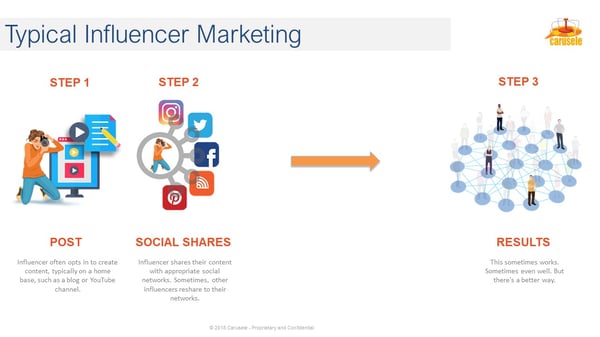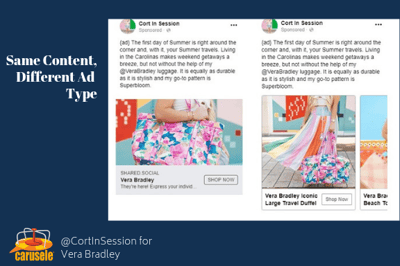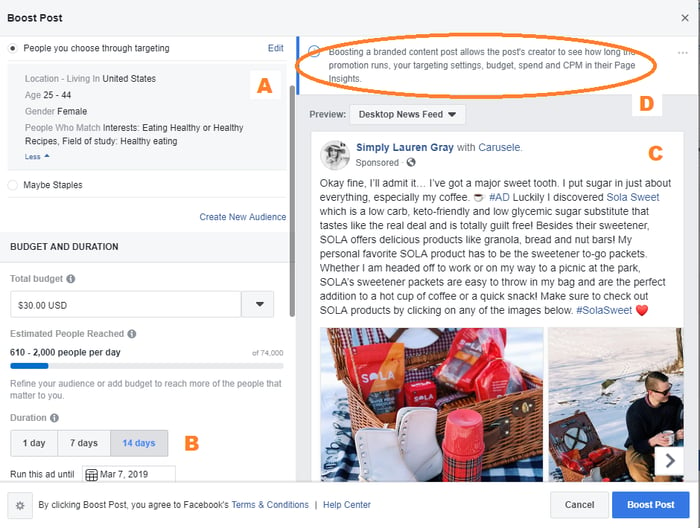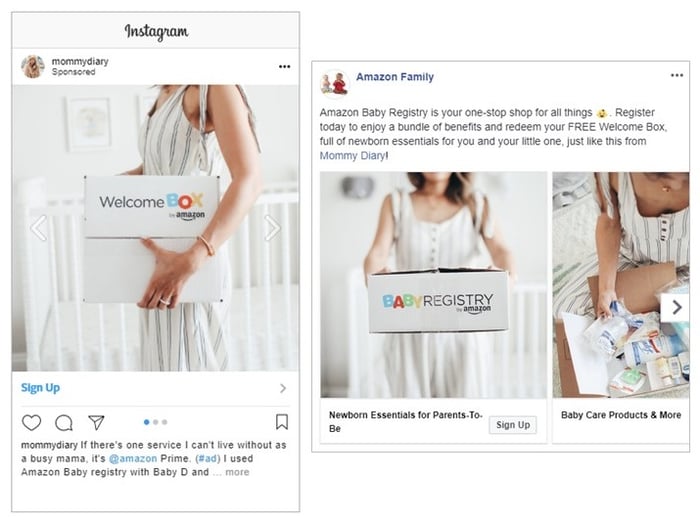It amazes me how many brands we talk to that are still stuck in the 2008 way of running influencer marketing.

Others, trying to get more sophisticated and scale their programs have started putting media budgets behind the influencer content from their campaigns but we still find the brands in boat #2 are missing out on the ability to truly optimize their campaigns for the greatest impact. So below, I'm breaking down the pros and cons of the different ways to amplify influencer content with paid media.
4 Ways to Run Paid Media Along Side Your Influencer Marketing Campaign
>>See How Many Views Your Last Campaign Actually Received with Our True Views Calculator<<
Running Ads Directly from Influencer Social Accounts
 This is our preferred approach as it basically removes all the "cons" you'll see in the other approaches below. The one issue: You have a level of power over the influencer's account that won't often be given for one-off projects. At Carusele, our relationships with influencers mean we've built the trust with them where they feel comfortable handing over the reigns and letting users run ads directly from their accounts. If you don't have those relationships, you may be stuck using one of the ways below.
This is our preferred approach as it basically removes all the "cons" you'll see in the other approaches below. The one issue: You have a level of power over the influencer's account that won't often be given for one-off projects. At Carusele, our relationships with influencers mean we've built the trust with them where they feel comfortable handing over the reigns and letting users run ads directly from their accounts. If you don't have those relationships, you may be stuck using one of the ways below.
But, if you work with us, or happen to have those relationships yourself, running the ads directly in the platform will give you access to the full suite of targeting and optimization capabilities available. It also means, you'll have access to the latest and greatest ad units and on some platforms, like Facebook, you can even leverage their proprietary reporting levers, like the Facebook Pixel to track each ad back to sales -- a common practice here at Carusele for e-commerce campaigns.
Running Ads from Influencer Accounts Using API-Based Third Party Software
This is a good near-best option if you don't have the types of relationships I've described above. With this approach, you're leveraging a third-party technology (some influencer marketplaces now have this tech built in) to run ads from the accounts of influencers who have already granted the platform API access to their accounts (namely Facebook and Instagram).
At Carusele, we have a policy to not use third party platforms to run social ads because the APIs and the third party platforms that build off those APIs don't get access to the latest and greatest targeting or ad units available in the social platforms until months after they're released. This is a major problem as we tend to find the most efficiency in the new ad units platforms launch.
Applying Facebook's Boost Button to Branded Content from Influencers
As a Facebook page manager, you may have seen when an influencer tags your brand as their partner using the Branded Content Tool (AKA the "Handshake" tool) you are given the option to "boost" that post. Don't take the bait! (Unless you don't have another option, that is.) That simple little boost button will give you the least amount of control over the targeting and optimization of the content your influencers create.
Let's break down how this works with a recent example from a campaign of ours by going through the options available to us using the Boost Option via the Branded Content Tool. 
- Targeting is Limited. It's not uncommon for us to run, then optimize against at least 5 different audience groups for every piece of content we boost. Leveraging the Boost tool via Facebook, you get one shot and one very broad audience. Our Custom Look-a-Like audiences, which have historically converted 2x better than the audiences we can build out using Facebook's targeting capabilities, can't even be used leveraging this tool.
- Timing is limited. Want to run the ad during a customized timeframe? How about accelerate the ad to front-load performance? Nope, can't do that if you're not working directly in business manager and instead opt to use the "Handshake" tool to boost your content. Don't even think about day-parting...
- Ad Units and Placements are EXTREMELY Limited. Optimization is Non-existent. Facebook will tell you the best practice is to run your ads with a minimum of 4 placements. For us, that often means taking a piece of content that's originally posted in the Facebook newsfeed and running it in the Instagram feed, and via Stories on Facebook and Instagram. Doing so helps diversify the audience and drives costs down significantly. Can't do that here. Also, less common for us, but for certain types of campaigns, we need to be able to tweak the influencer's content slightly. For example, the influencer may organically call out an event happening local to them and we need to change the date, time, and link so that the same creative can be used to promote the same event held in cities in across the US. We might also take what was originally posted as a Carousel post-type (like below) and test the same creative in a link-attached post type for optimization purposes. Can't do that if you're using the Boost option.
- The Page Owner Can See EVERYTHING You Did. When was the last time your brand publicized your advertising budget, or disclosed your targeted audience. Using the Branded Content Tool puts that info front and center, right within the page of the influencer who created the content. Sure, only the influencers see it and they could technically dig for that information if you run ads from their channel using either of the options listed above, but that data is much harder to find and not something influencers care to go searching for when it's buried in the Business Manager tool that they likely don't use.
Running Ads from Your Own Pages Using Influencer Content
This is a much less common practice than you'd think and it surprises me how often we hear from brands that they haven't negotiated in the rights to re-use content influencers created as part of their campaigns. So step 1 -- be sure you have the rights to use the content. Step 2 - YES! Run those ads! Absolutely. We tend to find influencer-generated content vastly outperforms brand created content when run on brand accounts both organically and via paid ads.
But don't make the mistake of thinking running influencer content on your owned channels is a replacement for running the ads from influencer channels, too. These strategies are complementary and can be executed at the same time. However, an ad coming from the brand channel is still an ad coming from the brand. And people trust brands less than they trust other people. The third party credibility that comes from an ad being run off the influencer's account can't be re-created on a brand account.
 Curious to see how our unique approach to boosting influencer content can benefit your brand?
Curious to see how our unique approach to boosting influencer content can benefit your brand?
We offer four ways to optimize your campaigns and are happy to show you what we can do in a free consultation call. So let's chat!
-1.png?width=504&height=360&name=Carusele%20logo%20%C2%AE%20logo%20Color%20(2)-1.png)